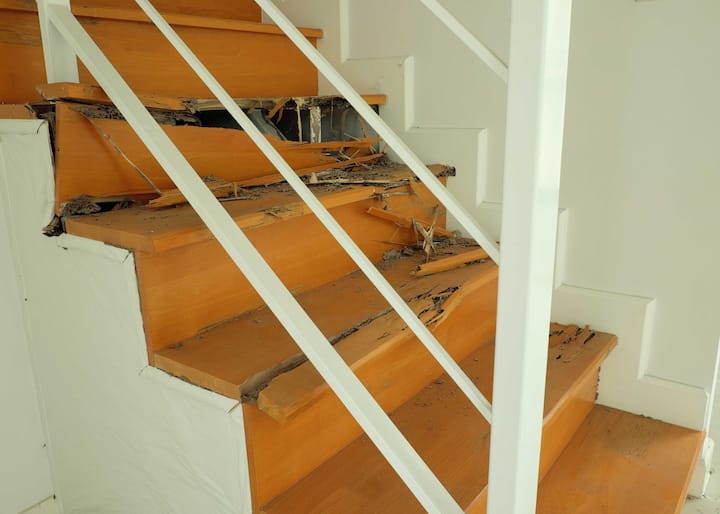Specialized experts in termite removal in Calabasas
Termites: A Threat to Your Home’s Structural Integrity
Are you concerned about termites? If so, you’re not alone. Termites are a common pest in the United States, causing billions of dollars in damage to homes each year. Surprisingly, most homeowners are unaware of the severe threat these pests pose until it’s too late.
Termites are wood-eating insects that live in colonies underground. They may establish their nests beneath your home’s foundation or inside its wooden structures. Once established, they will feed on the wood, causing significant structural damage over time.
Termite infestations can be challenging to detect as they often go unnoticed until significant damage has already occurred. Telltale signs of a potential termite problem include:
- Mud tubes on the foundation or exterior walls of your home
- Hollow-sounding wood when tapped
- Discarded termite wings near windows or doors
- Evidence of wood tunneling or sawdust
- Buckling or sagging floors
Regular termite inspections are crucial in protecting your home from these destructive pests. Prompt detection and treatment are essential to minimize damage and safeguard your investment. If you suspect a termite infestation, don’t hesitate to contact a licensed pest control professional immediately.
The Importance of Professional Termite Control
While DIY termite treatments may be tempting, it’s strongly advised to seek professional assistance to effectively address a termite infestation. These experts possess the knowledge, experience, and resources to:
- Identify the type of termite species infesting your home
- Determine the extent of the infestation and damage
- Develop and implement a customized treatment plan
- Monitor the effectiveness of the treatment and make necessary adjustments
- Prevent future infestations
Professional termite control services may initially cost more than DIY methods, but they provide long-term protection and peace of mind, preventing costly repairs down the road.
Prevention Measures to Protect Your Home from Termites
While professional termite control is essential, there are proactive steps you can take to minimize the risk of an infestation:
- Eliminate sources of moisture around your home, as termites are attracted to damp environments.
- Keep woodpiles and other debris away from the foundation of your home.
- Inspect your home regularly for signs of termite activity, especially during termite swarming season (typically spring and fall).
- Consider pre-treating new construction or additions with termite-resistant materials.
- Consult with a pest control professional for customized prevention recommendations based on your specific property and location.
By following these measures, you can significantly reduce the chances of a termite infestation and protect the structural integrity of your home.
Termites are a serious threat to your home’s well-being. However, with proper knowledge, proactive prevention, and professional assistance when needed, you can effectively safeguard your property from these destructive pests.

Get your fast, local termite control estimate
1. Call our team or complete our estimate form to schedule a termite inspection
Our calls and form completions are completely free to you. You will only be charged if you decide to work with one of our professional pest control service experts. Our termite removal contractors have years of experience and are knowledgeable in identifying and treating termite infestations. You can feel confident that your home will be in great hands with one of our network professionals.
2. Connect with a local Calabasas, California termite removal expert
Completing our form is a great option if you’re busy and want someone to get back to you at a later time. A call will connect you with a termite removal professional quicker. Receive your competitive estimate; often, you can receive an estimate right on the phone call, and sometimes a little more discovery is involved, and the termite removal expert might want to do some basic inspections before giving the estimate.
3. Don’t wait until it’s too late to protect your home from termites
Contact our network now to schedule a termite inspection and take the necessary steps to prevent and eliminate termite infestations. With our quality service and competitive prices, you can trust that your home is in good hands. Protect your home and your investment with professional termite removal services in Calabasas.